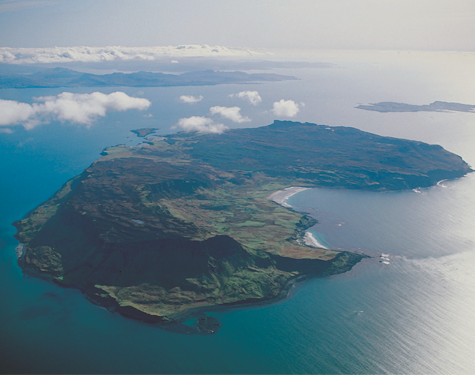Scottish island of Eigg celebrates its relationship with birds
The island of Eigg (Scottish Gaelic: Eige) is one of the Small Isles (Scottish Gaelic: Na h-Eileanan Tarsainn), a small archipelago of islands in the Inner Hebrides (Na h-Eileanan a-staigh) off the west coast of mainland Scotland. A possible origin of the name Eigg is the Scottish Gaelic for 'notched island' (eag). The island is 5 1⁄2 miles (9 kilometres) long from north to south, and 3 miles (5 km) east to west. This year from 17-20 April, it will hold its first film festival with birds as the theme for the inaugural event. It opens with The Messenger documentary (2015) which charts the global decline in songbirds and efforts by people to save them.
There will be a number of talks by film-makers and bird experts during the festival. Speakers will include naturalist Dr Kenny Taylor, wildlife cameraman Jim Manthorpe and sound recordist Pete Smith. The Island is noted for its birdlife and an average of 130 species of birds are recorded annually. It has breeding populations of golden eagle, white tailed sea eagle, buzzard, peregrine falcon, kestrel, hen harrier and short and long-eared owl. Great northern diver and jack snipe are winter visitors, and in summer cuckoo, whinchat, whitethroat and twite breed on the island. Its is also a popular place to see oystercatchers. This four day Island celebration will include films, guided walks, talks, workshops and other events.
The Isle of Eigg is a diverse island with coastal land, unimproved farmland, willow and hazel scrub, native woodland, raised bog and moorland. The Scottish Wildlife Trust is a member of the Isle of Eigg Heritage Trust, which manages much of the island. Wildflowers and arctic-alpines flourish on Eigg. Otters, seals, dolphins and minke whales can also be seen along the coastline and in the surrounding seas . The Island is rich in history with archaeological evidence pointing to the island having been occupied towards the end of the neolithic era, and start of the Bronze Age. Early Iron Age hut circles are found throughout the island. Evidence of the early establishment of a Christian monastery, Pictish carved stonework, and Norse influence when the Island was part of Kingdom of the Isles (Kingdom of Mann and the Isles) has also been found.






